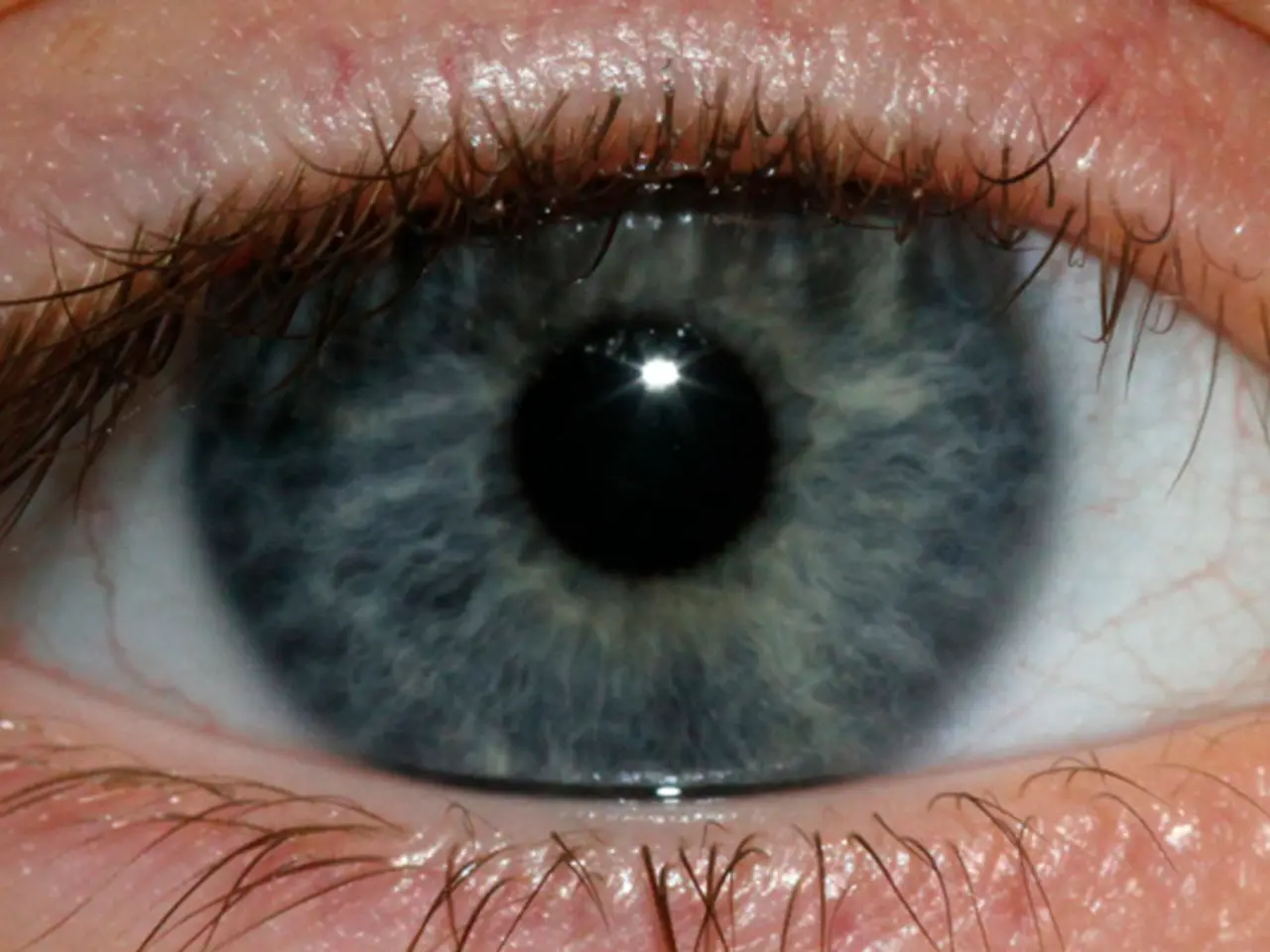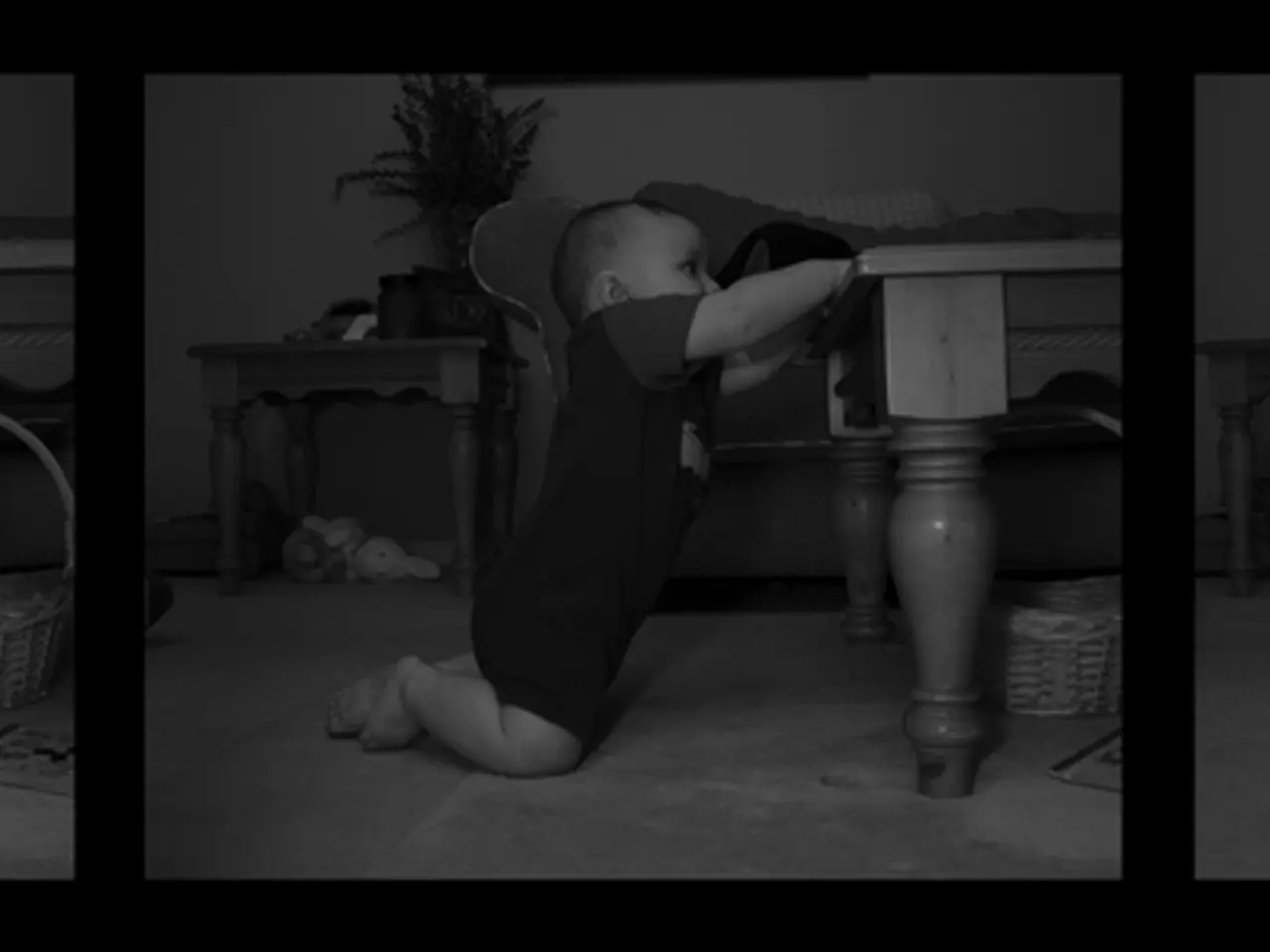Anatomy, Role, and Ailments of the Eyes: An Insight
In the realm of sight, the human eye performs a remarkable ballet of refraction, transforming incoming light into a clear and detailed image. This dance is orchestrated by four key players: the cornea, aqueous humor, crystalline lens, and vitreous humor.
The cornea, the eye's primary refractive surface, takes centre stage. This transparent, avascular structure, composed of several layers, provides most of the eye's focusing power. Its fixed curvature bends light rays as they enter the eye, setting the stage for the rest of the performance.
The aqueous humor, a clear fluid filling the anterior chamber between the cornea and the lens, enters the scene next. It contributes slightly to refraction, transmitting light through the eye's front segment with minimal distortion.
The crystalline lens, situated behind the iris, then fine-tunes the focus. Unlike the cornea, the lens is flexible and can change shape to adjust focus for objects at different distances. This accommodation allows the lens to bend light rays so they converge precisely on the retina for clear vision.
Finally, the vitreous humor, a gel-like substance filling the large posterior chamber, supports the retina while allowing light to pass through with little refraction.
This coordinated refraction ensures that light converges sharply on the retina, specifically on the fovea, the central part of the retina packed with cone cells responsible for sharp and color vision. If the curvature of the cornea or lens is not ideal, light focuses incorrectly, causing blurred vision. Procedures like LASIK correct the shape of the cornea to improve how light is focused in the eye.
The retina, a layer of light-sensitive cells lining the back of the eye, converts the light signal into electrical impulses. These impulses are then transmitted to the brain via the optic nerve, a thick bundle of nerve fibres, for processing.
It's worth noting that the cornea has no blood vessels due to the need to remain clear to refract light. The optic nerve leaves the eye at a point called the optic disc, which is also known as the "blind spot" because there are no rods or cones there.
The brain interprets these electrical impulses, giving us depth perception by coordinating the signals from both eyes. Rods, which generally exist around the edges of the retina and help with black and white vision, especially in low light conditions, play a crucial role in this process.
Anyone with concerns about their eyes or vision should consult an ophthalmologist, a specialist in medical and surgical eye care. Eye conditions can involve genetic factors, age, and other health conditions, such as Achromatopsia, age-related macular degeneration, Amblyopia, Anisocoria, Astigmatism, Cataracts, Chalazion, Conjunctivitis, Detached retina, Diabetic retinopathy, Diplopia, Floaters, Glaucoma, Mydriasis, Myopia, Optic neuritis, Strabismus, Uveitis, and more.
In essence, the eye's main function is enabling us to see the world in all its vibrant detail. Each part of the eye plays a unique role in this intricate dance of light, working together to bring us the gift of sight.
[1] https://www.ncbi.nlm.nih.gov/books/NBK535894/ [2] https://www.ncbi.nlm.nih.gov/books/NBK535895/ [3] https://www.ncbi.nlm.nih.gov/books/NBK535896/ [4] https://www.ncbi.nlm.nih.gov/books/NBK535897/ [5] https://www.ncbi.nlm.nih.gov/books/NBK535898/
Scientific advancements have led to a better understanding of various medical conditions affecting the eye, such as blindness which may result from issues in the cornea's curvature or the flexibility of the crystalline lens. In the realm of health and wellness, maintaining proper eye health is crucial for clear vision and overall quality of life.




